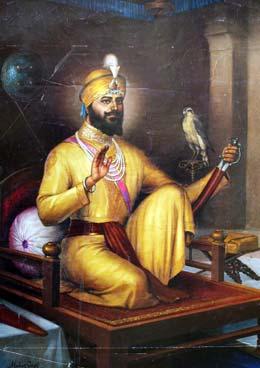A new ‘Golden Temple’

Hundreds of NRIs and businessmen from across India, Canada and the world will contribute a whopping Rs.600 crore to develop the birthplace of Guru Gobind Singh, the 10th guru of the Sikhs, on the lines of the Golden Temple in Amritsar, ahead of the guru's 350th birth anniversary in 2017.
Officials of the Takht Harmandir Saheb said NRIs from across the world, including the US, Britain and Canada, and businessmen from Mumbai, Delhi, Ludhiana, Kolkata and other cities have come forward to contribute to develop Harmandir Sahib.
Around five million people, mainly Sikhs from across the world, are expected to congregate here on the 350th birth anniversary of Guru Gobind Singh.
"Funds will not be a problem with NRIs and businessmen expected to contribute generously to develop it," Charanjeet Singh, general secretary of the Takht prabandhak committee, told IANS.
Work is already underway to develop and beautify Harmandir Saheb before the 350th birth anniversary, said R.S. Jeet, an official of Takht Harmandir Saheb.
More than 100 workers from Punjab, Uttar Pradesh, Bihar and Rajasthan are working day and night to complete the project.
The project includes a golden Guru Durbar on the lines of the Golden Temple.
Jeet said the main attraction would be the intricate gold inlay work being done on the ceiling of Harmandir Saheb.
"The entire project of gold work will cost Rs.50 crore," he said.
Britain-based Baba Mohinder Singh is funding the development of Guru Durbar, that also includes a facility for parking 100 vehicles.
The committee is also constructing 100 fully air-conditioned rooms for devotees, and planning an air-conditioned Diwan hall for congregations.
Mumbai-based businessmen Iqbal Singh and Surjeet Singh have been funding the construction of 100 rooms for gurdwara staff.
The committee has also sent a proposal to the central government for Rs.1,200 crore for all-round development of Patna Saheb and a request for holy city status.
Bihar Chief Minister Jitan Ram Manjhi said he was keen to develop the Sikh circuit in the state.
Manjhi recently visited Takht Harmandir Saheb and promised all possible help to the committee for completion of the project and making the 2017 event a grand success.
Guru Gobind Singh was the last of the ten Gurus, the one who transformed the Sikh faith. In 1699 he created the Khalsa (Pure), a community of the faithful who wore visible symbols of their faith and trained as warriors. Today the Khalsa comprises all practising Sikhs.
Guru Gobind Singh succeeded his father Guru Tegh Bahadur at the age of 9. His teachings were different from his predecessors' - he believed that no power could exploit the Sikhs.
He spent his childhood years studying Persian and Sanskrit, and was skilled in the art of war. His mission was to uphold right in every place and destroy sin and evil. In 1699 he chose the festival day of Vaisakhi as the occasion to transform the Sikhs into the Khalsa, a family of soldier saints.
Guru Gobind Singh introduced many of the customs that Sikhs practise today.
Sikhs who have been through the Amrit ceremony of initiation become Amritdhari, initiated Sikhs. They take new names and wear the 5 Ks - five physical symbols that Sikhs must wear.
He declared the the Sikh holy book as his successor instead of a human being. The Guru Granth Sahib would thus be the Sikhs' guide forever. Sikhs give it the same status and respect as a human Guru.









